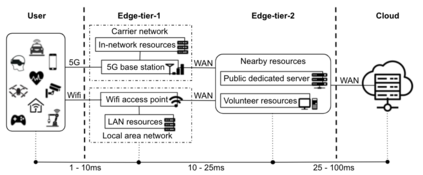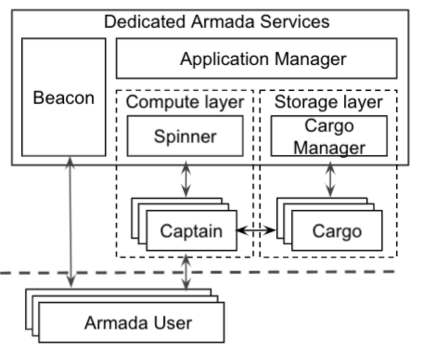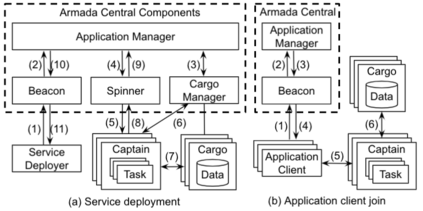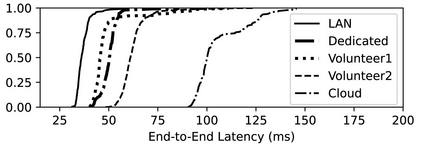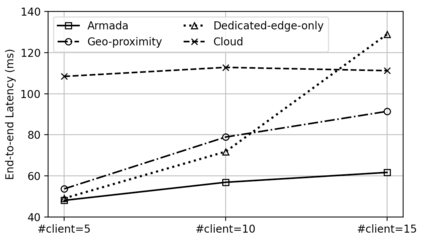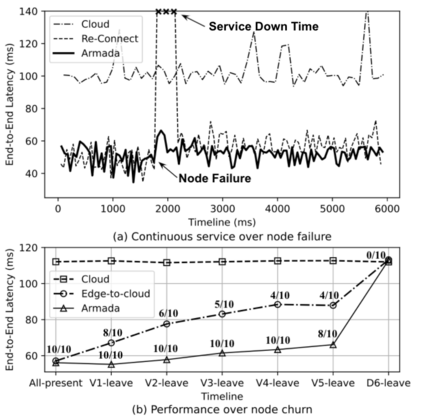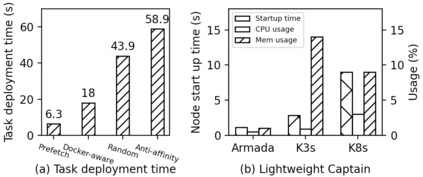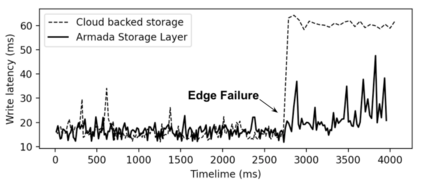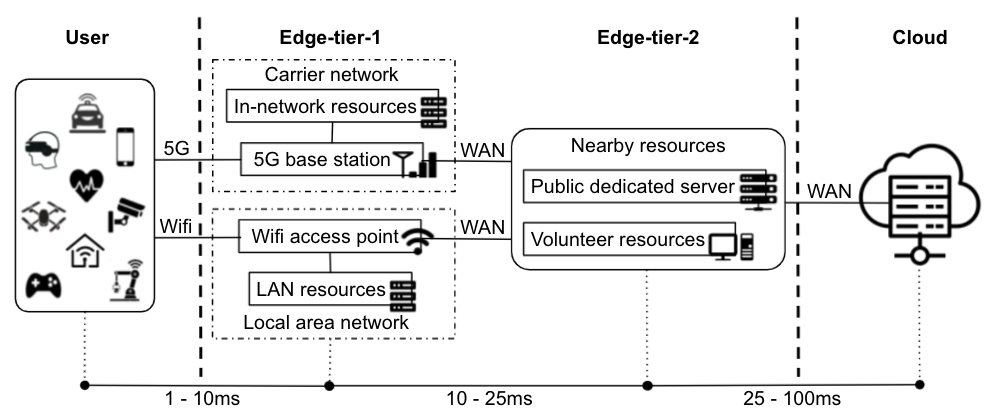Edge computing has enabled a large set of emerging edge applications by exploiting data proximity and offloading latency-sensitive and computation-intensive workloads to nearby edge servers. However, supporting edge application users at scale in wide-area environments poses challenges due to limited point-of-presence edge sites and constrained elasticity. In this paper, we introduce Armada: a densely-distributed edge cloud infrastructure that explores the use of dedicated and volunteer resources to serve geo-distributed users in heterogeneous environments. We describe the lightweight Armada architecture and optimization techniques including performance-aware edge selection, auto-scaling and load balancing on the edge, fault tolerance, and in-situ data access. We evaluate Armada in both real-world volunteer environments and emulated platforms to show how common edge applications, namely real-time object detection and face recognition, can be easily deployed on Armada serving distributed users at scale with low latency.
翻译:边缘计算通过利用数据接近和卸载悬浮敏感和计算密集的工作量,为周边边缘服务器提供了大量新出现的边缘应用。然而,由于在广域环境中支持边缘应用用户的规模有限,由于存在点边缘地点有限,弹性有限,因此带来了挑战。在本论文中,我们引入了Armada:一个密集分布的边缘云层基础设施,探索如何利用专门和志愿资源为不同环境中的地理分布用户服务。我们描述了轻量级 Armada结构和优化技术,包括性能认知边缘选择、自动缩放和负荷平衡以及现场数据访问。我们评估现实世界志愿环境和模拟平台的Armada,以显示如何在实时物体探测和面部识别等通用边缘应用可以很容易地部署在Armada,在低纬度范围内为分布的用户服务。

